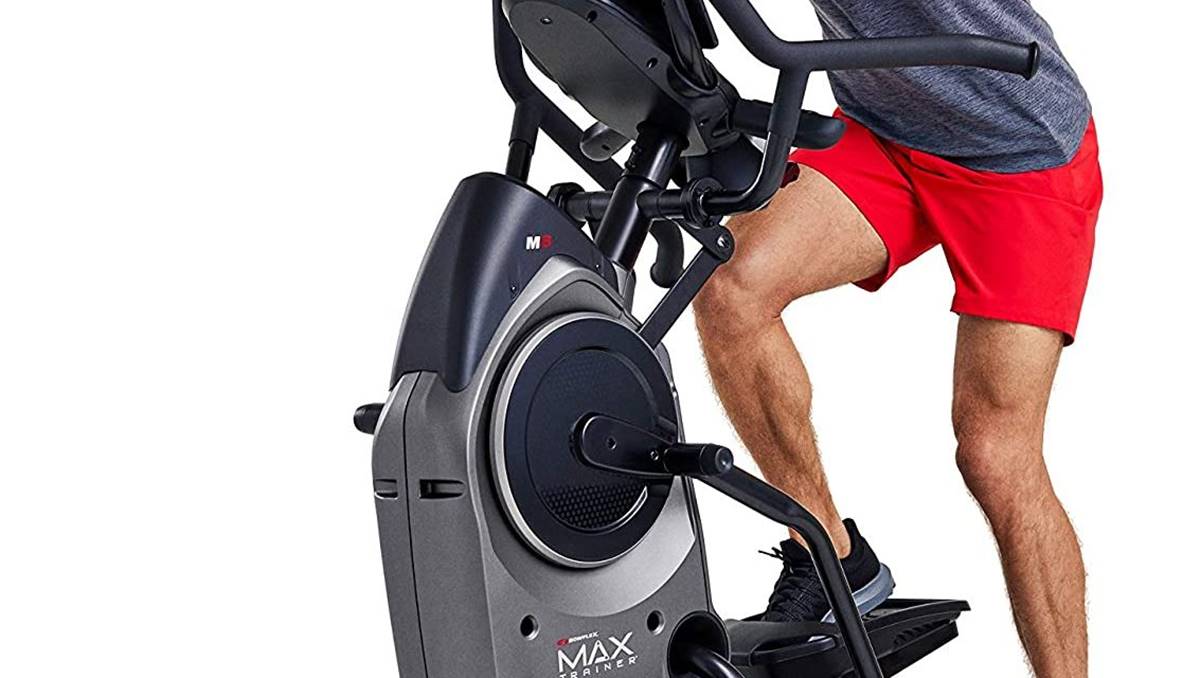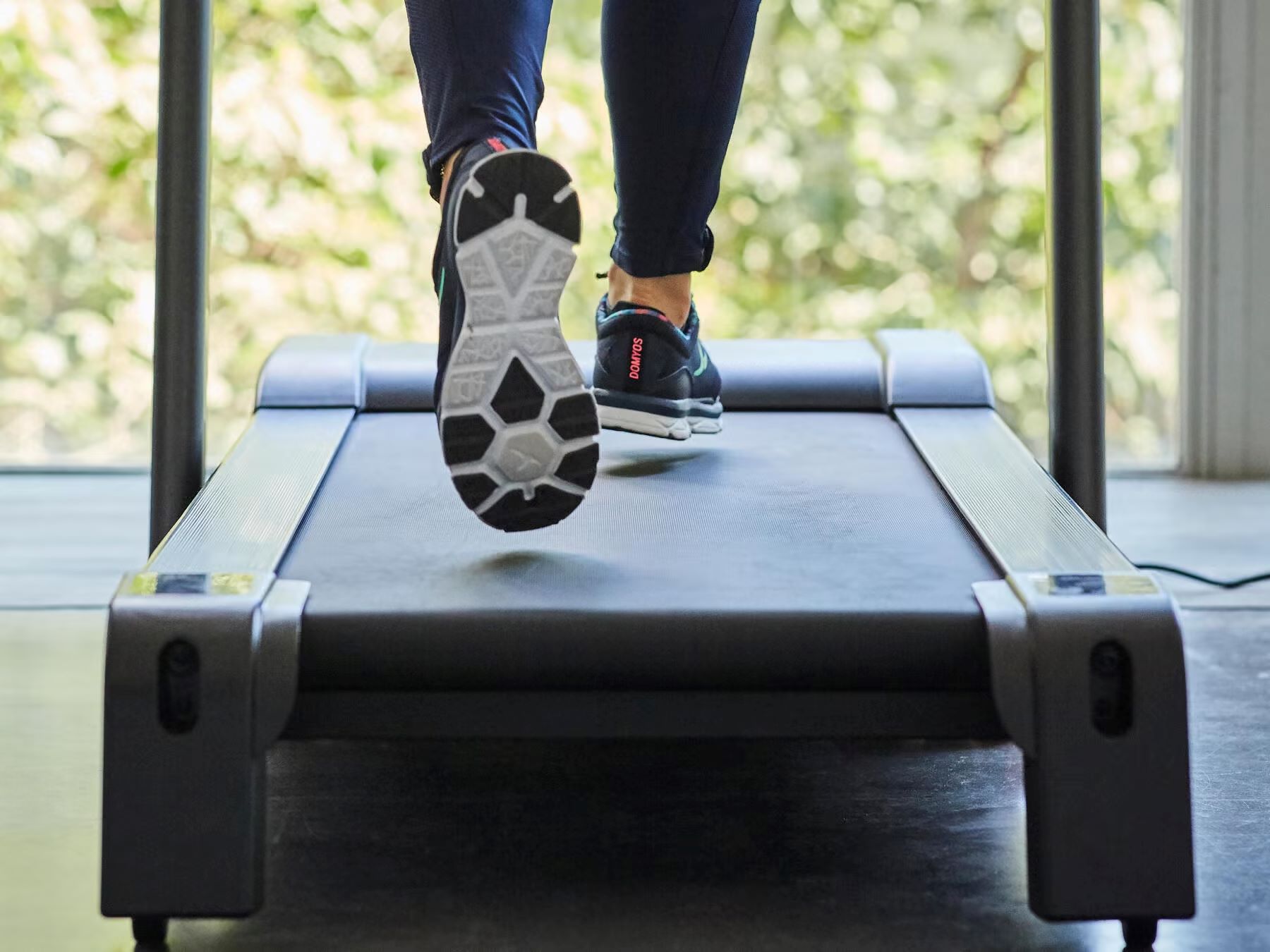Home>Misc>Featured>What Is High Intensity Interval Training?


Featured
What Is High Intensity Interval Training?
Modified: March 2, 2024
Discover the benefits of high intensity interval training with this featured guide. Boost your fitness level and burn calories efficiently.
Introduction
High Intensity Interval Training (HIIT) has gained popularity in the fitness world as an efficient and effective way to improve fitness levels and burn calories. With its intense bursts of activity followed by short recovery periods, HIIT offers a time-saving alternative to traditional cardio workouts. Whether you’re a fitness enthusiast or just starting your fitness journey, understanding the basics of HIIT can help you make informed decisions about incorporating this training method into your routine.
HIIT involves alternating periods of high-intensity exercise with short periods of rest or low-intensity activity. This type of training puts your body into an anaerobic state, where you’re working at a high intensity for short periods, followed by brief recovery periods. The intensity helps you to maximize your cardiovascular efficiency and burn more calories in less time compared to steady-state activities like jogging or cycling.
HIIT can be performed with a variety of exercises, including cardiovascular activities like running, cycling, or jumping rope, as well as strength exercises such as bodyweight squats or kettlebell swings. The flexibility of HIIT allows you to tailor a workout to your fitness level and personal preferences.
Aside from being a time-efficient workout option, HIIT has been shown to offer numerous benefits. These include improved cardiovascular health, increased fat burning, enhanced endurance, and boosted metabolism. Additionally, HIIT can help improve insulin sensitivity and promote better blood sugar control, making it particularly beneficial for individuals with diabetes or those looking to manage their weight.
In the following sections, we will delve deeper into the definition of HIIT, explore how it works, provide sample workouts, offer tips for beginners, and discuss precautions and considerations to keep in mind. By the end, you’ll have a comprehensive understanding of HIIT and how it can help you achieve your fitness goals.
Definition of High Intensity Interval Training
High Intensity Interval Training (HIIT) is a form of exercise that combines short bursts of high-intensity activity with periods of rest or low-intensity exercise. Unlike traditional cardio workouts, which typically involve maintaining a steady pace for an extended period of time, HIIT involves pushing your body to its maximum effort level for a brief period, followed by a recovery period.
The intensity of HIIT exercises pushes your cardiovascular system to its limits, triggering a higher heart rate and metabolic response. This results in improved cardiovascular fitness and increased calorie burn even after your workout is over. The short intervals of intense exercise challenge your body to work harder and adapt quickly, making it an efficient and effective way to improve fitness levels in a short amount of time.
The duration of a typical HIIT workout can range from as little as 10 minutes to 30 minutes or more, depending on your fitness level and goals. It’s important to note that the intensity and duration of each interval should be tailored to your individual fitness abilities to prevent injury and ensure maximum benefits.
To perform HIIT, you can choose from a variety of exercises. Common choices include running, cycling, rowing, jumping rope, or bodyweight exercises like burpees or squat jumps. The key is to engage in exercises that elevate your heart rate and challenge your muscles to work hard during the intense intervals.
What sets HIIT apart from other forms of exercise is its ability to push your body into an anaerobic state, where you’re working at a high intensity and your muscles are relying on stored energy rather than oxygen for fuel. This leads to increased calorie burn and fat oxidation, making HIIT particularly effective for weight loss and improving body composition.
In summary, High Intensity Interval Training (HIIT) is a workout method that involves short bursts of intense exercise followed by periods of rest or low-intensity activity. It is a time-effective way to improve cardiovascular fitness, burn calories, and promote weight loss. With its adaptable nature and numerous benefits, HIIT has become a popular choice for individuals looking to maximize their workout efficiency and achieve their fitness goals.
Benefits of High Intensity Interval Training
High Intensity Interval Training (HIIT) offers numerous benefits that make it a popular workout choice for individuals of all fitness levels. Whether you’re aiming for weight loss, improved cardiovascular health, or increased endurance, incorporating HIIT into your exercise routine can help you achieve your goals more efficiently. Here are some key benefits of HIIT:
- Efficient calorie burn: HIIT workouts are known for their ability to burn a significant amount of calories in a short period of time. The intense bursts of exercise push your body to its maximum effort level, increasing your heart rate and metabolic rate. This results in a higher calorie burn during and after the workout, even when you’re at rest.
- Improved cardiovascular fitness: HIIT challenges your cardiovascular system by pushing your heart rate to its maximum capacity during the intense intervals. Over time, this leads to improved cardiovascular endurance, better oxygen uptake, and increased stroke volume – all of which contribute to a healthier heart and improved overall cardiovascular fitness.
- Increased fat burning: HIIT exercises have been shown to be effective at burning fat and reducing body weight. The intense intervals during a HIIT workout elevate your heart rate and stimulate the release of fatty acids from fat cells. This results in increased fat oxidation during and after your workout, contributing to weight loss and improved body composition.
- Time-saving: One of the biggest advantages of HIIT is its time efficiency. Traditional cardio workouts can often take up a significant amount of time, whereas an effective HIIT workout can be completed in as little as 10 to 30 minutes. This makes it a great option for individuals with a busy schedule who still want to achieve their fitness goals.
- Boosted metabolism: HIIT workouts not only burn calories during the exercise session but also have a lasting effect on your metabolism. The intense intervals increase your metabolic rate, leading to an elevated calorie burn even after your workout is finished. This is known as the afterburn effect or excess post-exercise oxygen consumption (EPOC).
- Versatile and adaptable: HIIT can be customized to suit your fitness level and preferences. Whether you’re a beginner or an advanced exerciser, you can modify the intensity, duration, and exercises to suit your needs. This versatility allows for continued progress and prevents plateauing in your fitness journey.
Incorporating HIIT into your fitness routine can bring about notable improvements in your fitness level, body composition, and overall health. However, it’s important to note that HIIT may not be suitable for everyone, especially individuals with certain health conditions. As with any exercise program, it’s advisable to consult with a healthcare professional before starting HIIT if you have any concerns or pre-existing medical conditions.
How High Intensity Interval Training Works
High Intensity Interval Training (HIIT) works by pushing your body to its maximum effort level through short bursts of intense exercise followed by periods of rest or low-intensity activity. This training method triggers various physiological responses in your body, leading to several positive adaptations and benefits.
During the intense intervals of HIIT, your heart rate increases significantly, pushing your cardiovascular system to work harder. This stimulates the production and release of growth factors, which promote the growth of new blood vessels, improve oxygen uptake, and enhance the efficiency of your cardiovascular system.
The intense and quick movements during HIIT also stimulate the activation of fast-twitch muscle fibers. These muscle fibers are responsible for generating power and speed and are often neglected during steady-state cardio workouts. By engaging these muscle fibers, HIIT contributes to muscle growth, strength development, and improved athletic performance.
Another key aspect of how HIIT works is its impact on the body’s energy systems. During the short bursts of intense exercise, your body relies on anaerobic metabolism, which uses stored ATP (adenosine triphosphate) for energy. This causes a rapid depletion of ATP and the buildup of metabolic by-products, such as lactate.
During the recovery periods of HIIT, your body turns to aerobic metabolism to replenish ATP stores and remove waste products. This aerobic recovery process allows your body to clear lactate and other metabolites, leading to improved muscular endurance and a faster recovery time between intervals.
One of the key benefits of HIIT is its ability to stimulate the EPOC (excess post-exercise oxygen consumption) effect. After a HIIT workout, your body continues to consume oxygen at an elevated rate for an extended period of time. This elevated oxygen consumption contributes to increased calorie burn after the workout, helping with weight loss and fat burning.
In summary, HIIT works by pushing your body to its maximum effort level through intense exercise intervals followed by recovery periods. This training method stimulates cardiovascular adaptations, activates fast-twitch muscle fibers, utilizes anaerobic metabolism, and triggers the EPOC effect for increased calorie burn and fitness improvements.
Sample High Intensity Interval Training Workouts
High Intensity Interval Training (HIIT) offers endless possibilities when it comes to designing workouts. You can incorporate a variety of exercises, intensity levels, and durations to create a workout that suits your fitness goals and preferences. Here are a few sample HIIT workouts to get you started:
-
The Tabata Workout:
Tabata is a popular form of HIIT that consists of 20 seconds of intense exercise followed by 10 seconds of rest, repeated for a total of 4 minutes. You can choose any exercise for this workout, such as burpees, mountain climbers, or jumping jacks. Perform 20 seconds of the exercise at maximum effort, followed by 10 seconds of rest, and repeat for 8 rounds.
-
The 30-20-10 Workout:
The 30-20-10 workout is a time-based interval workout that gradually increases the intensity. Begin with 30 seconds of low-intensity exercise, followed by 20 seconds of moderate intensity, and finish with 10 seconds of all-out effort. Repeat this pattern for 5 minutes, then rest for 1-2 minutes before repeating the sequence for a total of 3-4 sets.
-
The 1:1 Ratio Workout:
This workout involves alternating between high-intensity exercise and active recovery. Choose two exercises, such as sprinting and walking, or kettlebell swings and bodyweight squats. Perform the high-intensity exercise for 30 seconds, followed by 30 seconds of active recovery. Repeat for a total of 10-15 rounds, or adjust the duration to suit your fitness level.
-
The Pyramid Workout:
The pyramid workout involves gradually increasing and decreasing the duration of the intense intervals. Start with 20 seconds of intense exercise, followed by 10 seconds of rest. Increase the duration of the intense intervals by 10 seconds with each round (e.g., 30 seconds, 40 seconds, and so on) until you reach your desired maximum duration. Then, work your way back down to 20 seconds, reducing the interval duration by 10 seconds each round.
-
The EMOM (Every Minute on the Minute) Workout:
EMOM workouts involve performing a set number of exercises or reps at the start of every minute. For example, you can choose four exercises and perform 10 reps of each exercise at the beginning of every minute for 10 minutes. Use the remaining time within each minute as rest before starting the next set. Adjust the number of exercises and reps to suit your fitness level and desired intensity.
Remember to warm up properly before starting a HIIT workout and cool down afterward to prevent injury and aid in recovery. It’s important to listen to your body and adjust the intensity and duration of the exercises to match your fitness level. By incorporating these sample workouts or creating your own variations, you can enjoy the benefits of HIIT and customize your training routine to suit your goals.
Tips for Getting Started with High Intensity Interval Training
Getting started with High Intensity Interval Training (HIIT) can be both exciting and challenging. To help you make the most out of your HIIT workouts and stay motivated, here are some valuable tips to keep in mind:
-
Start at your fitness level:
HIIT is highly adaptable, and you can adjust the exercises, intensity, and duration to match your fitness level. If you’re a beginner or have any underlying health conditions, start with low-impact exercises and shorter intervals. Gradually increase the intensity and duration as your fitness level improves.
-
Warm up properly:
A proper warm-up is essential to prepare your body for the intense exercise ahead. Spend 5-10 minutes performing dynamic stretches and light cardio to increase your heart rate, warm up your muscles, and loosen your joints.
-
Focus on form:
Maintaining proper form during HIIT exercises is crucial to prevent injuries and maximize your results. Pay attention to your posture, engage your core, and use controlled movements. If you’re unfamiliar with an exercise, seek guidance from a qualified fitness professional.
-
Listen to your body:
It’s important to listen to your body and adjust the intensity or take breaks when needed. It’s normal to feel fatigued during HIIT, but pushing through excessive pain or discomfort can lead to injury. Rest and recover as needed, and don’t be afraid to modify exercises if they are too challenging.
-
Be consistent:
Consistency is key when it comes to seeing results with HIIT. Aim to incorporate HIIT workouts into your routine at least 2-3 times a week. Consistent effort will help you build endurance, improve cardiovascular fitness, and achieve your fitness goals more effectively.
-
Vary your workouts:
Keep your HIIT workouts exciting by incorporating a variety of exercises, intervals, and formats. This not only prevents workout boredom but also challenges your body in different ways and ensures balanced muscle development.
-
Stay hydrated:
HIIT workouts can be intense and make you sweat. Make sure to stay hydrated by drinking water before, during, and after your workouts. Listen to your body’s thirst cues and pay attention to any signs of dehydration.
-
Recover and rest:
Allow your body adequate time to recover and rest between HIIT sessions. This will help prevent overtraining, reduce the risk of injury, and ensure that your body has time to repair and adapt to the training stimulus. Incorporate active recovery days or low-intensity workouts into your weekly routine.
By following these tips, you can start your HIIT journey with confidence, maximize the benefits of your workouts, and minimize the risk of injury. Remember to always listen to your body and consult with a healthcare professional before starting any new exercise program, especially if you have any pre-existing medical conditions.
Precautions and Considerations for High Intensity Interval Training
While High Intensity Interval Training (HIIT) offers numerous benefits, it’s important to approach it with caution and consider certain factors to ensure a safe and effective workout. Here are some precautions and considerations to keep in mind before starting HIIT:
-
Consult with a healthcare professional:
If you have any underlying health conditions or concerns, it’s advisable to consult with a healthcare professional before starting HIIT. They can assess your individual circumstances and provide guidance on what exercises and intensity levels are suitable for you.
-
Start gradually:
If you’re new to exercise or haven’t engaged in high-intensity workouts before, it’s important to start gradually. Begin with shorter intervals and lower intensities, and gradually increase as your fitness level improves. This allows your body to adapt to the demands of HIIT and reduces the risk of overexertion or injury.
-
Listen to your body:
Pay attention to how your body feels during and after HIIT workouts. While it’s normal to feel fatigue and muscle soreness, be mindful of any sharp or persistent pain, dizziness, or shortness of breath. If you experience any concerning symptoms, stop exercising and seek medical attention if needed.
-
Proper form and technique:
Maintaining proper form and technique is crucial during HIIT to prevent injuries. Ensure you understand the correct form for each exercise and focus on executing movements correctly. Performing exercises with poor form can put unnecessary stress on your joints and increase the risk of injury.
-
Consider your fitness level:
HIIT can be adjusted to suit different fitness levels, but it’s important to be realistic about your abilities. Pushing yourself too hard or attempting advanced exercises before you’re ready can lead to injury. Gradually progress and challenge yourself within your limits.
-
Recovery and rest:
Allow your body sufficient time to recover and rest between HIIT sessions. Overtraining can lead to fatigue, decreased performance, and an increased risk of injury. Incorporate rest days and listen to your body’s signals for adequate recovery.
-
Hydration and nutrition:
Stay hydrated before, during, and after your HIIT workouts. Hydration is essential for optimal performance and recovery. Additionally, fueling your body with a balanced diet that includes carbohydrates, protein, and healthy fats will provide the energy needed for HIIT sessions.
-
Modify and adapt as needed:
HIIT is highly customizable, and it’s important to modify exercises and intensity levels to suit your individual needs. If an exercise is too challenging or causes pain, find a suitable alternative that targets the same muscle groups.
By taking these precautions and considerations into account, you can enjoy the benefits of HIIT while minimizing the risk of injury or strain. Remember to always prioritize your safety and listen to your body throughout your HIIT journey.
Conclusion
High Intensity Interval Training (HIIT) has revolutionized the fitness world with its time-efficient and effective approach to exercise. By incorporating short bursts of intense activity followed by periods of rest or low-intensity exercise, HIIT offers numerous benefits for individuals of all fitness levels. From improved cardiovascular health and increased calorie burn to enhanced endurance and boosted metabolism, HIIT can help you achieve your fitness goals in a shorter amount of time.
Understanding the fundamental principles of HIIT, such as proper form, gradual progression, and listening to your body, is crucial for a safe and successful workout experience. By consulting with a healthcare professional, starting at your fitness level, and considering factors like hydration, nutrition, and recovery, you can make the most out of your HIIT sessions and minimize the risk of injury or burnout.
Remember, HIIT is adaptable and versatile, allowing you to customize your workouts to suit your preferences and goals. Whether you choose exercises like running, cycling, or bodyweight movements, the key is to challenge yourself and push your limits during the intense intervals. And as you progress and gain strength and endurance, don’t forget to vary your workouts to keep them engaging and effective.
Incorporating High Intensity Interval Training into your fitness routine can lead to significant improvements in cardiovascular fitness, fat burning, muscle strength, and overall physical performance. However, it’s important to listen to your body, make adjustments as needed, and always prioritize safety and proper technique.
Get ready to experience the power of HIIT and discover a new level of fitness and wellness. Whether you’re a beginner or an experienced athlete, HIIT can help you take your fitness journey to new heights. So lace up your shoes, prepare to sweat, and unleash your potential with the challenging and rewarding world of HIIT.









